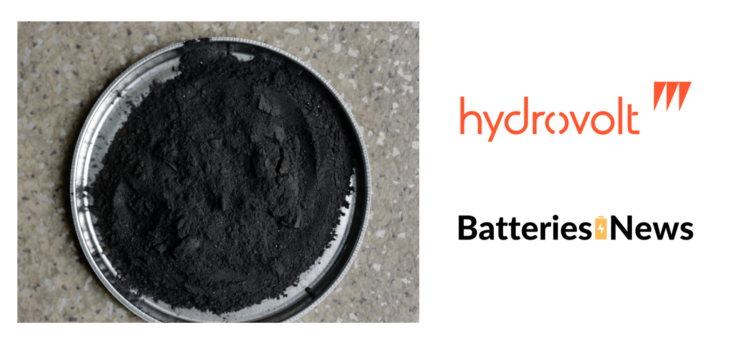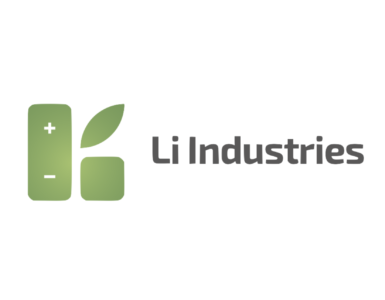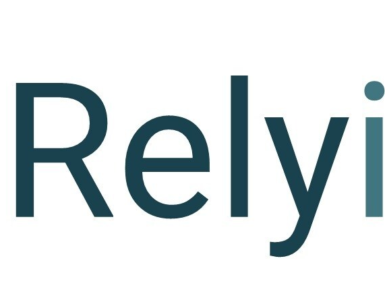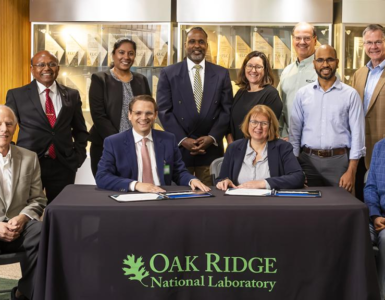What Hydrovolt learned in its first year of commercial operation of recycling plant – an interview with Batteries News.
Hydrovolt is a sustainable battery recycling company established in 2020 as a 50/50 joint venture between Norwegian industry giant Hydro and Swedish battery manufacturer Northvolt. Hydrovolt operates the largest recycling plant in Europe – located in Fredrikstad – with capacity for 25,000 EV batteries per year.
Hydrovolt develops processes and technologies that increase the proportion of materials recovered from recycling EV batteries, recapturing 95% of their weight for reuse. Hydrovolt is currently exploring its capacity to scale up within Europe and North America, with a mission to ensure that no battery is ever wasted.
In this interview, you meet Hydrovolt’s Chief Commercial Officer, Andreas Frydensvang. His professional journey spans over 15 years of transforming businesses, spearheading global expansion, and developing commercially viable solutions through technology and digitalization. In his current role at Hydrovolt, he is steering the company’s commercial activities, nurturing customer relationships, and uncovering business opportunities. He is also currently leading Hydrovolt’s expansion into new markets.
🔥 What about we co-host a webinar? Let's educate, captivate, and convert the battery economy!
Batteries News is the global go-to online magazine for the battery industry, we can help you host impactful webinars that become a global reference on your topic and are an evergreen source of leads. Click here to request more details
Tell us about the plant in Fredrikstad? (When was it built, how many works there, what is being recycled, what processes). Our plant in Fredrikstad is the first of its kind in Europe – a modern, industrial-scale battery recycling plant sized to meet the needs of Norway’s fleet of EVs. The facility can handle around 12,000 tons of battery packs every year, or around 25,000 EV batteries.
The plant is designed to maximize recovery rates and minimize environmental impacts and consists of two sites– the Crushing and Sorting (C&S) department and the Discharge and Dismantling (D&D Øra) department.
- Crushing & Sorting (C&S)
On this site, modules are being crushed and shredded. The battery electrolyte is evaporated and collected, and the remaining solid materials are sorted into fractions of plastics, aluminium, copper, and black mass. Several different sorting techniques are used to ensure that fractions contain only one type of material.
The fractions are collected in the form of pellets, varying in size from around 0.5 to 5 mm which are packaged and prepared for delivery to our partners.
Black mass is the most valuable fraction we recover – a powder containing metals of nickel, manganese, cobalt, and lithium. Recycling black mass into highly purified, battery-grade material requires a hydrometallurgical treatment.
Northvolt has developed and validated a hydromet process at its facilities at Northvolt Labs, Sweden, where battery cells featuring 100% recycled cathode were first produced in November 2021. Black mass from Hydrovolt will be delivered to Northvolt´s recycling group, constructing one of the largest battery recycling plants in the world, Revolt, alongside its first battery gigafactory in Skellefteå, Sweden.
- Discharge and dismantling (D&D)
Hydrovolt took over a building used by Tata Steel (Norsk Stål Tynnplater) as the company decided to close the site in Fredrikstad. At this site, Hydrovolt is building the D&D department. All 19 operators who worked at TATA Steel were offered new positions at Hydrovolt and are now under training as D&D Operators.
The D&D process discharge the batteries of all energy to make them safe to recycle. Then, the batteries packs are dismantled to extract battery modules.
Our operators are currently gaining practical experience with batteries – which is crucial for helping operators acquire valuable and relevant skills before we ramp up and scale our production. Safety is a priority at Hydrovolt, and every operator must have sufficient knowledge of the risks involved in handling batteries. Several battery packs have already been successfully discharged and dismantled.
In the next phase and scaling up of our D&D site, we will be developing and testing a new discharge and dismantling technology. It will contribute to more efficient and automated recycling processes and has the potential to replace power from the grid through increased flexibility and stability.
Is it Europe’s largest recycling facility of EV- batteries? Yes, Hydrovolt is Europe´s largest running electric vehicle battery recycling plant.
Main challenges of the recycling process? Some of the main challenges with the recycling process includes:
- Large variation in battery design and battery chemistries: The batteries we receive come from different car types and will have large variations both in design and in battery chemistry. More standardized design of battery packs and more information shared from the battery producers/car manufacturers would ease the recycling process.
- Recycling of material fractions like electrolyte and plastic: Our goal is to create a sustainable battery value chain, where all material fractions are recycled and reused. However, some of the material fractions coming from the batteries are more challenging to recycle than others. Examples are plastic components which are contaminated with other metals, and the liquid electrolyte consisting of organic solvents. Efforts are made both on lab and industrial scale to overcome these challenges, but we believe collaboration between different stakeholders like recyclers, academia and material producers is important.
Main opportunities of the recycling process? Although the current quantities of batteries reaching their end-of-life are relatively low, they are projected to surge significantly in the near future. By 2030, an estimated 250,000 tons of batteries will require recycling in Europe. Domestic European battery recycling is preferable to exporting batteries for recycling since it:
- reduces emissions and transportation costs
- supports the European battery manufacturing industry
- creates jobs and value around a new battery recycling industry
Norway will be the first country to have significant volumes of EV batteries coming to end-of-life, it is logical therefore to begin establishing recycling capacity in Norway. Despite misconceptions, batteries are highly recyclable.
Provided the right process is used, upwards of 95% of a battery can be recycled, to recover metals and plastics which can be recirculated into manufacturing flows. If we fail to recycle batteries, two things happen: we create a tremendous amount of waste (and associated environmental problems) and we remain dependent on mining for the extraction of raw materials required for battery production.
Traditional raw materials sourcing carries high risks from a sustainability point of view. It is both carbon intensive, impactful on the environment and presents social risks. As global battery manufacturing increases, the demands (and costs) of mining increase.
Through recycling, we can reduce the need for mining of fresh raw materials and secure a sustainable supply of raw materials for the battery industry.
What is the plan ahead for scaling up the plant in Fredrikstad?
Implementing the new technology as we received funding for in June 2023, continue to recruit more people and further improve our processes, routines, and way of working. We are also exploring to use the experience in Fredrikstad to establish similar sites and plants in Europe and the US.
How do you work with technology advancement and innovation? As mentioned above, the batteries we recycle come in many variations – and are constantly evolving with new chemistries and technologies.
To ensure that we stay at the forefront of the battery recycling industry, we actively follow market trends and closely monitor the latest advancements in battery chemistry. Our team of experts is dedicated to staying informed about emerging technologies. Our goal is to provide a comprehensive and sustainable solution for battery recycling, regardless of the specific chemistry employed in the batteries.
Also, battery recycling is high-tech and requires a lot of automation. It’s complicated and challenging, and you need solid knowledge to operate the machines. There is also extensive R&D and lab activities in addition to the actual recycling to further develop the processes. This is innovative – our aim is to produce no waste, and no one is doing that in the world.
What is Hydrovolt’s next steps?
Hydrovolt is exploring an expansion of its recycling capacity in Europe and North America. Our goal is to create a network of recycling plants across Europe and the US. With our expansion to new markets, we will be able to handle large volumes of batteries as they come in, while also effectively managing the current volumes of recalls, and production scrap.
What Hydrovolt learned in its first year of commercial operation of recycling plant – an interview with Batteries News, June 20, 2023








